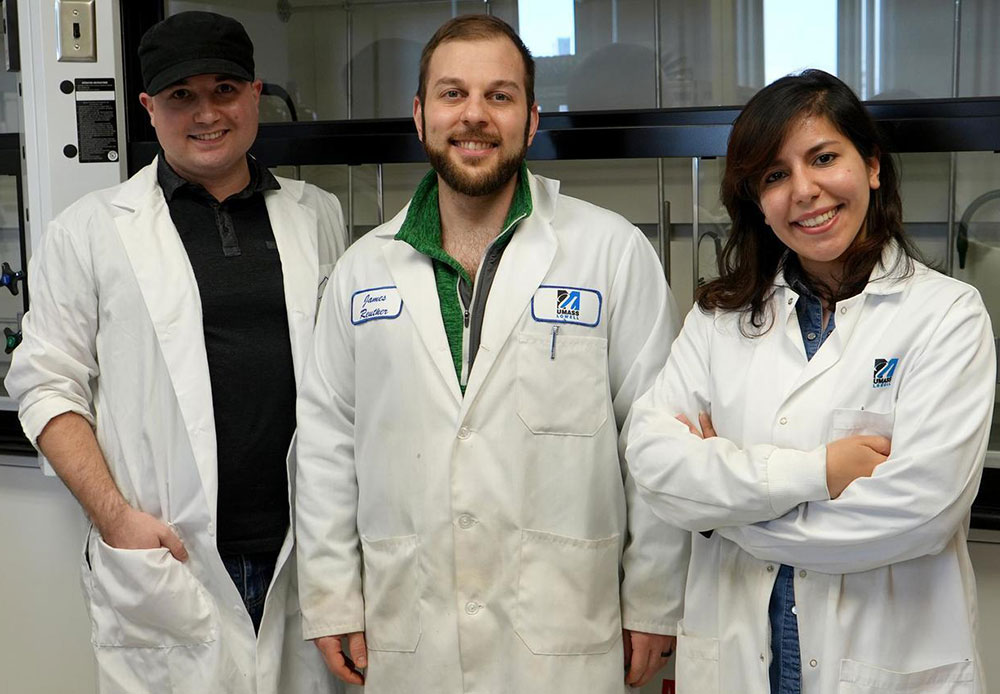What have been called dangerous “forever chemicals,” used to make nonstick cookware to firefighting foam have made their ways into drinking water, but UMass Lowell researchers are working on a new gel to remove the substances.
Led by chemistry Assistant Professor James Reuther, the work to remove PFAS—per- and polyfluoroalkyl substances—is supported by the U.S. Geological Survey and the Massachusetts Technology Transfer Center with grants totaling nearly $85,000.
Because of their prevalence and a lack of regulation, people can be exposed to PFAS through drinking water, which can become contaminated when these substances enter the environment. Discoveries emerging since the 1960s have shown PFAS exposure may lead to increased cancer risks, decreased fertility and several other health issues. Federal and state agencies have taken steps to protect communities from exposure, but risks remain because PFAS do not easily degrade.
“PFAS are one of the biggest environmental concerns of our time,” said Reuther. “They’re pervasive—used so often, and literally everywhere—you can test the blood of individuals across the country and there’s almost a guarantee you’ll find PFAS there. We need new ways to get rid of these chemicals in an efficient manner.”
Reuther, along with chemistry Ph.D. students Dylan Shuster and Shayesteh Tafazoli, both from Lowell, are working on a solution. To filter PFAS out of water, the team has created a gel to trap pollutants as water filters through. Traditionally, activated carbon is used to remove PFAS and other pollutants, but carbon lacks one of the gel’s major advantages: the gel can be modified to “target specific pollutants for removal,” Tafazoli said.
The gel is also a sustainable alternative to carbon filters. As single-use items, these filters need to be thrown away after they become filled with pollutants. With the gel, researchers can apply a stimulus such as ultraviolet light to remove PFAS, which can then be properly disposed and the gel reused.
“The sustainability aspect is the most enticing piece of this research. We don’t want to be adding to the problem,” Shuster said.
The team is also examining ways to improve the gel so it is equipped to decompose PFAS, as well as remove heavy metals and other contaminants from water.
“We are not going to stop here,” Tafazoli said.
